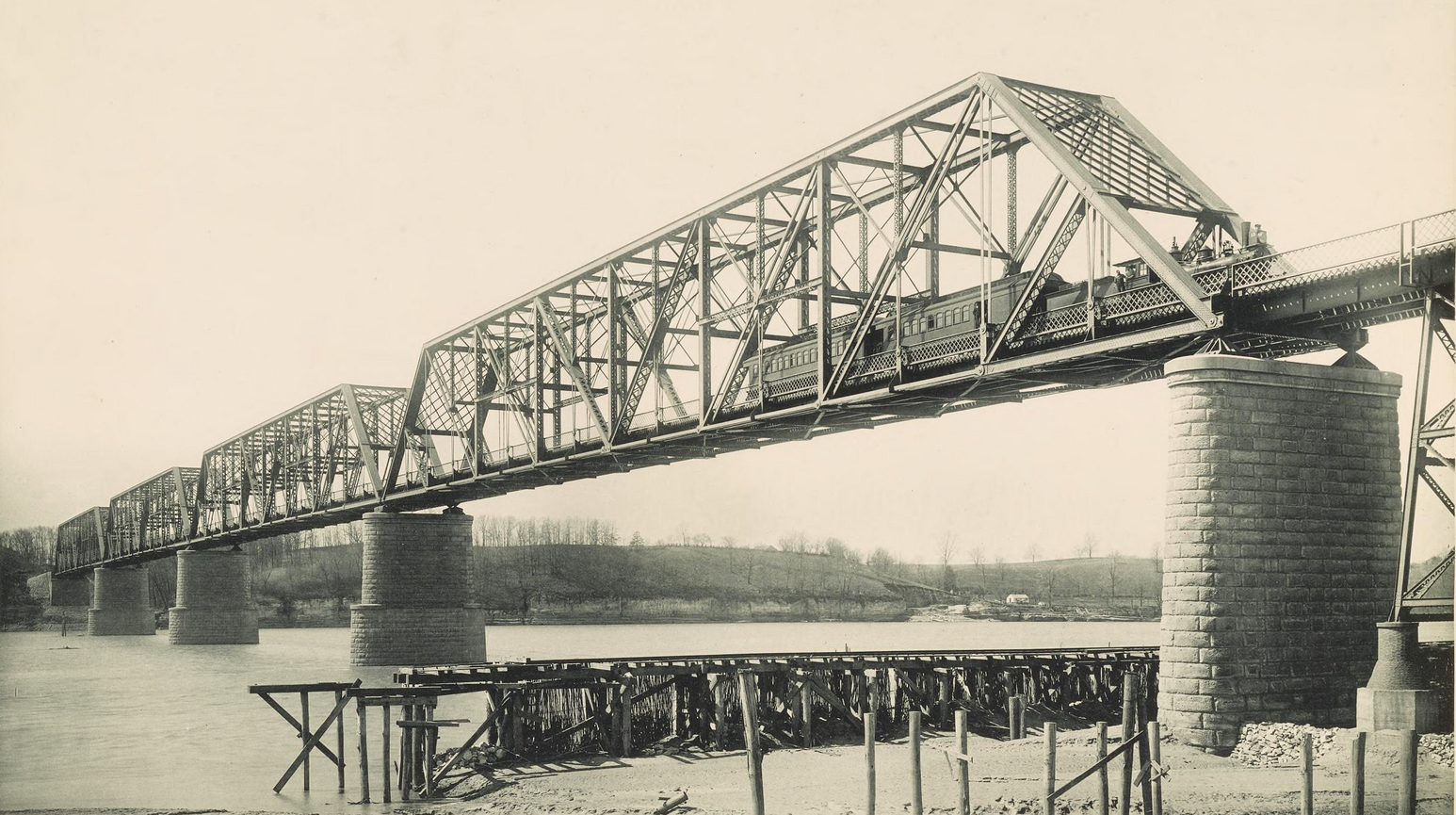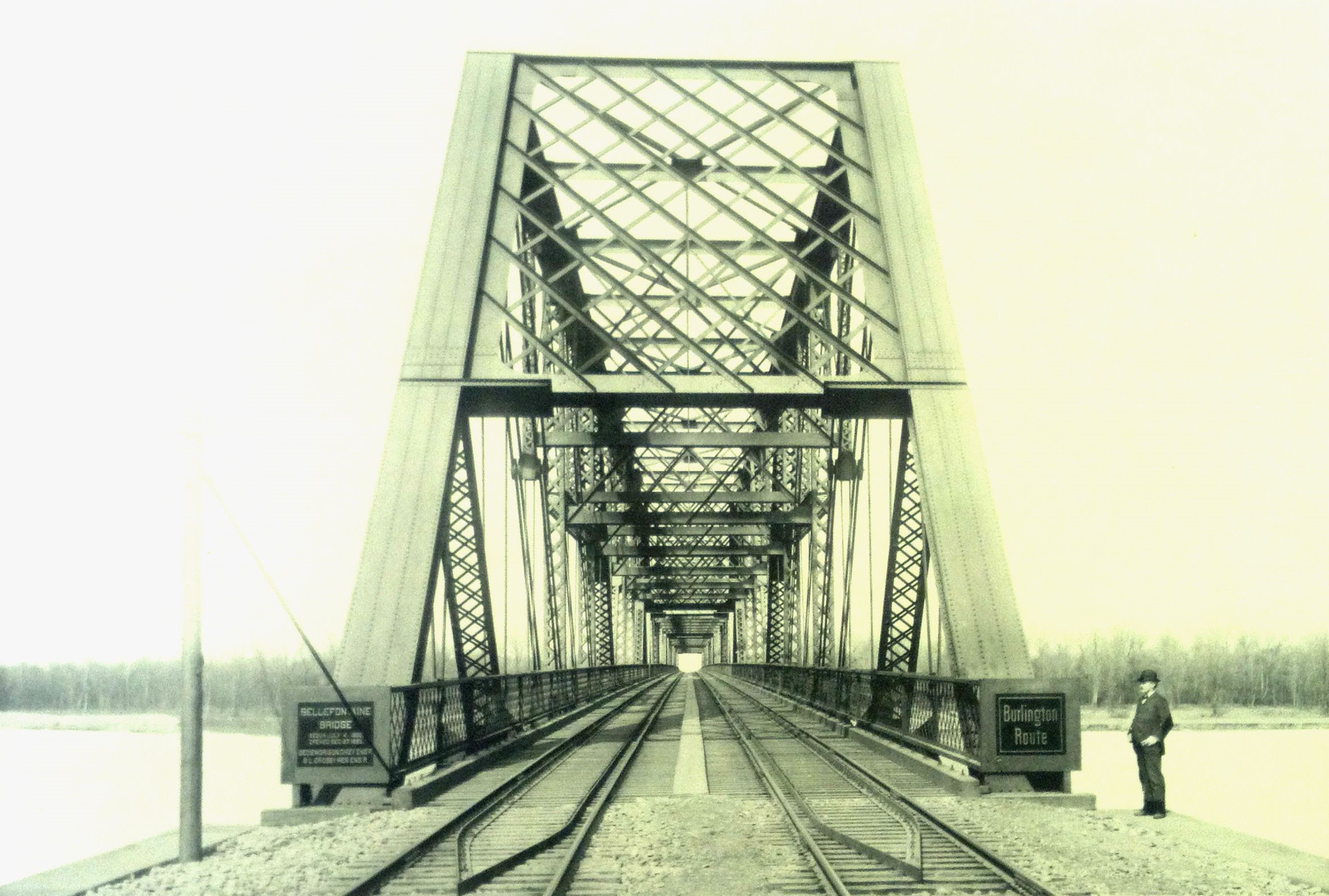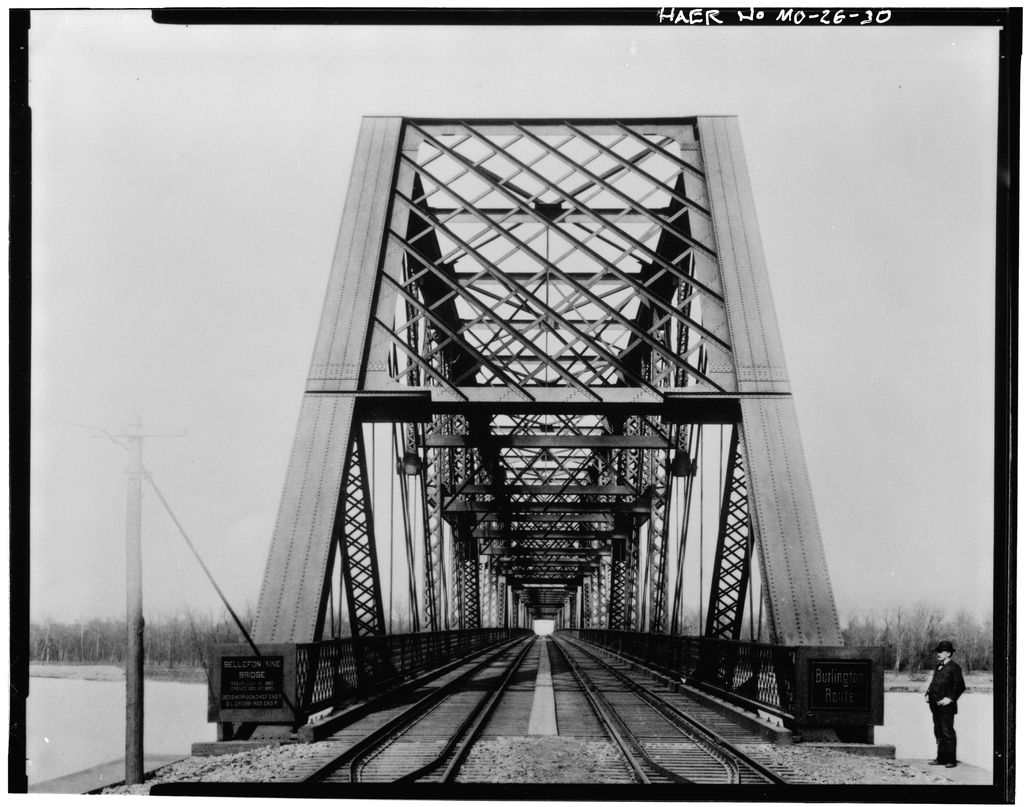This line would be completed in 1857, and by 1858 the Iowa Southern Junction Railroad began construction on an extension into Fort Madison. This would be completed in 1859 by the Iowa Southern Railroad.
These two railroads would become a part of the Keokuk and St. Paul Railway in 1866. By 1867, the line would be extended to Burlington, Iowa where it would meet a mainline. The line would be completed in late 1869.
Far south of Iowa, a railroad known as the Clarksville and Western Railroad begun construction of a 54 mile line stretching from St. Peters, Missouri to Louisiana, Missouri.
Similarly, the Mississippi Valley and Western Railway completed a 34 mile segment from West Quincy, Missouri to Buena Vista, Iowa in 1872. This segment was started by the Mississippi and Missouri River Air Line Railroad in 1868.
In 1873, the Clarksville and Western Railroad was purchased by the Mississippi Valley and Western Railway in 1873. This railroad would complete segments from West Quincy to Hannibal, Missouri and from Lousiana to Clarksville.
In 1875, the railroad would become part of the St. Louis, Keokuk and North Western Railway. This railroad would complete the line between Buena Vista, Iowa and St. Peters Missouri in 1879.
Finally, in 1881; the railroad built a portion from Buena Vista to Keokuk. This created a continuous line between St. Peters and Burlington.
After a rename in 1887, the St. Louis, Keokuk and North Western Railroad built a final 49 miles from Cuivre Junction (at Old Monroe) to St. Louis in 1892. The entire line was considered critical to the development of industry along the Mississippi River.
Both the Keokuk and St. Paul Railway, as well as the St. Louis, Keokuk and North Western Railroad were purchased by the Chicago, Burlington & Quincy Railway in 1901. The CB&Q had been constructing a significant amount of track throughout the midwest.
In 1907, the 10 mile spur to St. Peters would be abandoned, considered unnecessary.
The remainder of the line remained critical to the CB&Q, which would eventually merge with the Northern Pacific and Great Northern to form Burlington Northern in 1970.
By 1996, the thriving BN decided to merge with the Atchison, Topeka & Santa Fe to form BNSF Railway, the current owner of the line. It currently sees a solid traffic base, and is operated as the Hannibal Subdivision.
12/03/21
View an article regarding the construction of this bridge.
The beautiful Bellefontaine Bridge crosses the Missouri River near it's mouth, parallel to US-67. In fact, it is actually the last railroad bridge across the Missouri River.
The bridge features four massive pin connected Baltimore Through Truss spans. George S. Morison, well renounced for his steel trusses designed a number of large bridges which used Whipple designs, and eventually graduated to Baltimore truss designs.

Historic photo of the bridge, from the above article
This bridge was one of the first to use a Baltimore design. The nearby Merchants Bridge used a Pennsylvania Through Truss design, and was completed just a couple years earlier. Morison engineered this structure as well.
This bridge features 16-Panel spans, considerably longer than usual. These spans were built to double track standards. Originally, the bridge featured a long deck girder viaduct approach, built by A&P Roberts Company/Pencoyd Iron Works. However, this would be replaced in 2013 by a modern deck girder approach, with concrete jump spans.
This modern approach was built to single track standards. It is unknown if the double track is not needed, or if the main spans can no longer hold the load of double tracked bridge.
The historic substructures of this bridge are of stone construction, while the newer ones are made of concrete.

Historic photo of the bridge, from the above article
Taking approximately a year to complete, the bridge was one of the signature structures along the Chicago, Burlington & Quincy line.
The author has ranked this bridge as being highly significant, due to the age of the bridge, as well as the revolutionary design.
The photo above is an overview. The photo below is looking across the bridge. The below photos come from the Historic American Engineering Record.
| Upstream | St. Charles Rail Bridge |
| Downstream | Confluence With Mississippi River |

